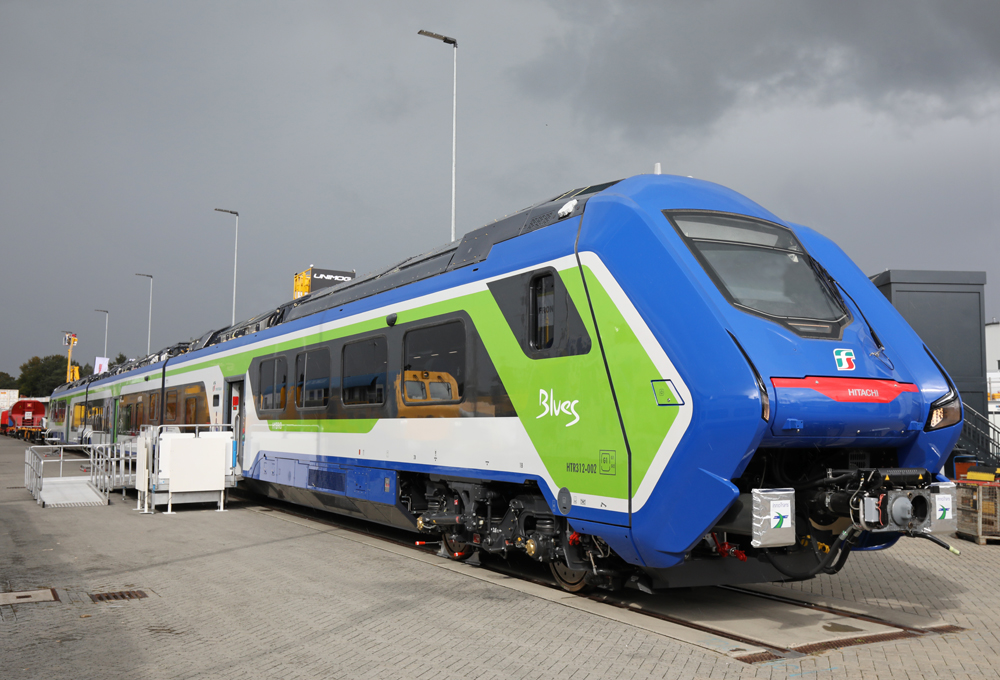
Italian national rail company Trenitalia launched its latest hybrid passenger trains earlier this month on the scenic route from Taranto to Reggio Calabria on the nation’s southern coast. The trains, built by Hitachi in Italy, are claimed to be the world’s first four-mode hybrid trains — and while they are the first to enter service, they are not alone, as similar multi-mode trains are being built by other manufacturers for service elsewhere in Europe.
The four-mode train introduced in Italy actually has three possible power sources — onboard diesel engines; overhead electric power where available via a pantograph; and onboard batteries to store energy, e.g. from braking which can be used instead of conventional diesel or electric power — all of which it can use separately. However the train can also use its diesel engines along with the batteries to provide additional power, especially when starting; this is described as its fourth mode.
The seven new type HTR412, 75-mph, four-car trains, which cost $65 million, will replace the existing diesel-locomotive-hauled services branded as “Intercity” during the remainder of 2024. Hitachi Rail says the new trains will reduce carbon emissions by up to 83% compared to the older diesel-powered trains. Similar “Blues” regional trains, designated HTR312, are replacing the few remaining Italian diesel-locomotive hauled regional trains (on the Florence-Siena route) this year. These also feature batteries, designed for use in stations replacing diesel (and therefore exhaust fumes), or as emergency power if overhead power fails.
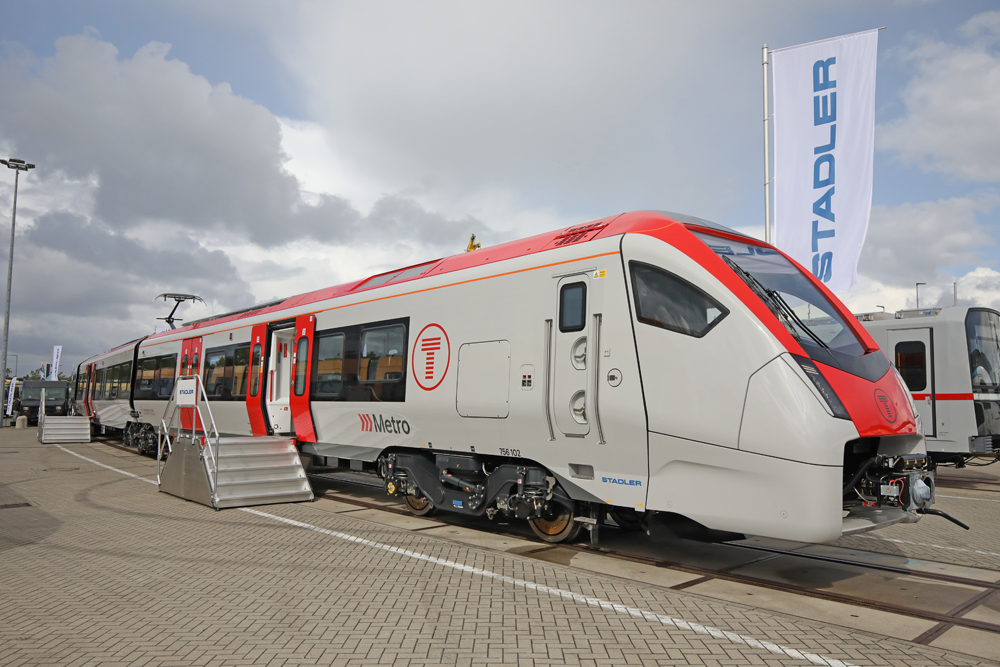
Stadler has built a fleet of three-power-source, four-mode trains for commuter rail service in the UK for train operator Transport for Wales, which will use them on several lines serving the Welsh capital Cardiff. The multi-mode trains have been chosen to minimize the cost of adding overhead electrification to routes built in Victorian times, mainly for coal transport, which even today have low clearances in bridges and tunnels. By adding battery and diesel options (which like the new trains in Italy can also work as a diesel-battery hybrid), the cost of putting up overhead power cables in places with insufficient clearance can be avoided. Testing using overhead power of the new trains built as three- and four-car trains with battery and diesel power in a separate section — known as Class 756 — began in April. Passenger service is planned later this year.
Elsewhere in the world, the combination of diesel, electric, and battery power in a single train has yet to take off. In Japan, a variety of passenger diesel multiple units have also been equipped with batteries combined with electric traction motors, and are described as hybrid by their operators.
Multi-mode in Amtrak’s future
In the U.S., dual-mode diesel and electric locomotives have been in use around New York City for decades. Amtrak’s forthcoming Airo equipment order will add batteries into the mix — but not by placing them on the locomotive as in Europe. Instead, they will include special battery-equipped cars with powered trucks and connected to the locomotives’ powered trucks as well [see “Amtrak rolls out ‘Airo’ branding …,” Trains News Wire, Dec. 15, 2022].
Amtrak has ordered 75 dual-mode versions of the Siemens Charger, designated ALC-42E, designed to work with new Siemens-built, push-pull trains working regional services from or through New York City, where diesel operation is banned. The ALC-42E locos will only work as bi-modes when coupled to the new cars. Two types of special car are planned. One will be equipped with a pantograph and traction motors enabling the diesel locomotive to become an electric, using its traction motors but not the diesel engine, when under the Northeast Corridor’s overhead catenary, replacing the need for electric locomotives. The other variant, for trains working up the Hudson Valley route from New York, is a battery car to be connected to the loco — again converting it to an electric loco — but removing the need for the third-rail electrification currently used. When the ALC-42E fleet and the battery cars are in service, the existing dual-mode P32AC-DM locomotives equipped with third-rail shoe gear will no longer be required.
Multi-mode locomotives coming in Europe
Locomotives as well as passenger multiple-units trainsets are adopting the three- or four-mode traction approach in Europe. Tri-power locomotives — able to operate from overhead electric power, an onboard diesel, and/or batteries — are being developed and ordered by customers, normally rail freight or leasing companies. In many cases, these allow battery plus diesel operation, adding the “fourth mode” described earlier.
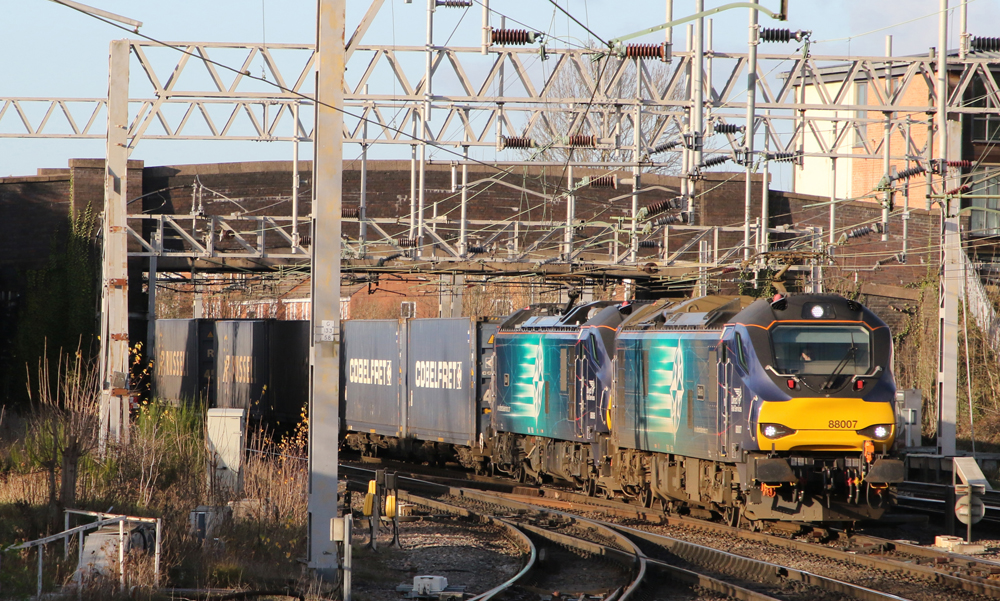
Stadler, which has sold the technology in passenger trains, is also developing locomotives. It is building a tri-mode design designated Class 93 for British train operator Rail Operations Group; like the Stadler and Hitachi passenger trains described earlier, these will be capable of battery-diesel operation so meet the four-mode criteria. In fact, these units are designed to combine battery power with diesel to increase tractive effort when starting heavy trains away from overhead power wires. The Class 93 uses a relatively small car body– required because of the restrictive structure gauge to be found on parts of the British rail system — but includes a Caterpillar C32 1,200-hp V12 engine, along with electric traction equipment for a 5,400-hp electric loco and lithium-titanium oxide batteries capable of 540 hp if operating on their own. By using the diesel with batteries 1,700 hp can be produced, although this is as a boost to start the train or to add power on gradients, not for sustained running. When operating as an electric locomotive, the four-axle Class 93 can operate at 110 mph.
Chinese manufacturer CRRC is also building multi-mode switching locomotives at Kiel in northern Germany, at the Vossloh Locomotives plant it bought in 2020. A small number of diesel-battery switchers have been delivered to German rail operator Deutsche Bahn for maintenance-of-way trains and car switching. Previously DB had bought diesel-battery hybrid locos from Alstom, which has also sold tri-power switchers to Swiss Federal Railway (SBB) for similar MoW duties. These locomotives, designated Prima H4 by Alstom or SBB Class 940, began deliveries in 2023. Like the Stadler Class 93, they can operate in four modes combining battery power with diesel, and also with electric power from the overhead catenary with diesel for really heavy trains.
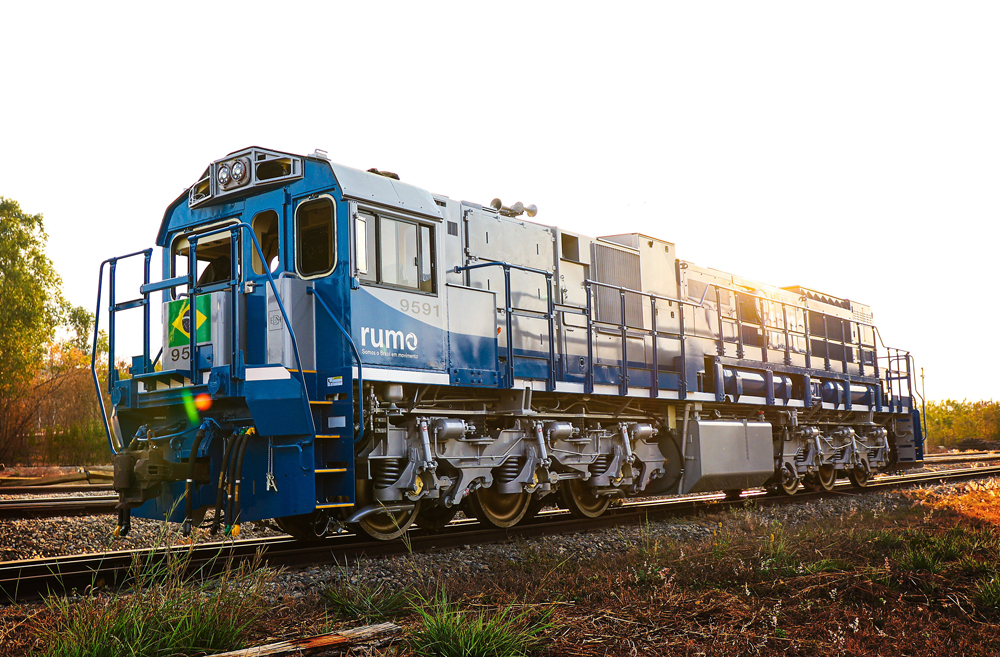
Outside Europe, tri-power locomotives are not currently in use, although many diesel-battery hybrids are now being developed, including those suitable for mainline use, not just switching. Progress Rail has provided two GT38H locos to Brazilian freight company Rumo; the locomotives utilize a diesel-electric system with a Caterpillar 3512 engine and battery packs, with energy to power the motors coming from the diesel generator and a bank of batteries [see “Progress Rail delivers hybrid …,” News Wire, Oct. 6, 2023]. Rumo estimates the model could produce a total fuel reduction of up to 45%, and will reduce emissions, such as particulate matter, nitrous oxide, and noise. The batteries are recharged in use with energy generated during dynamic braking recovered, instead of dissipating as heat through high power resistors. According to Progress Rail, the locomotive control system activates the batteries automatically when needed, aligning with the engineer’s power requests.
Progress will also provide Canadian national with its first plug-in hybrid diesel/battery-electric mainline locomotive, an EMD SD70H [see “CN to acquire, test first plug-in …,” News Wire, April 5, 2024]. The SD70ACe-T4 variant can use its batteries to act as a power boost with the main diesel engine or as a substitute for the diesel.







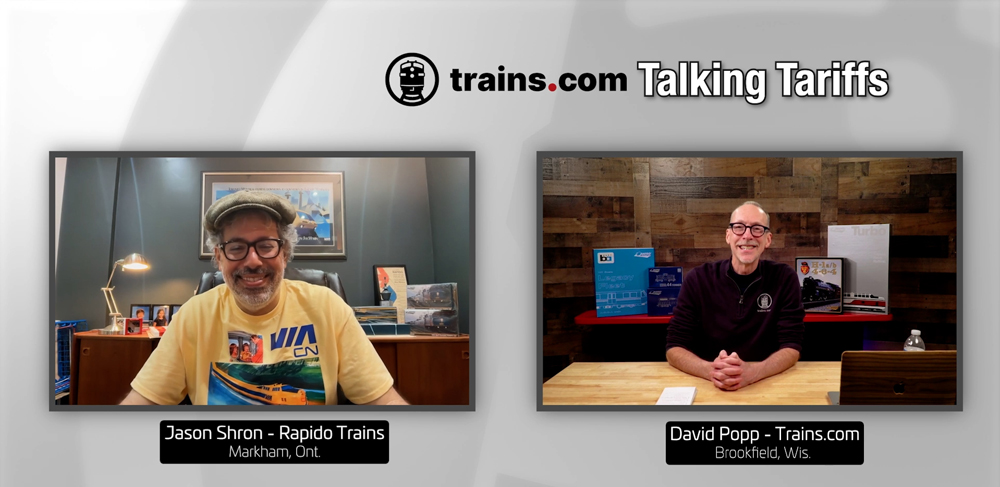
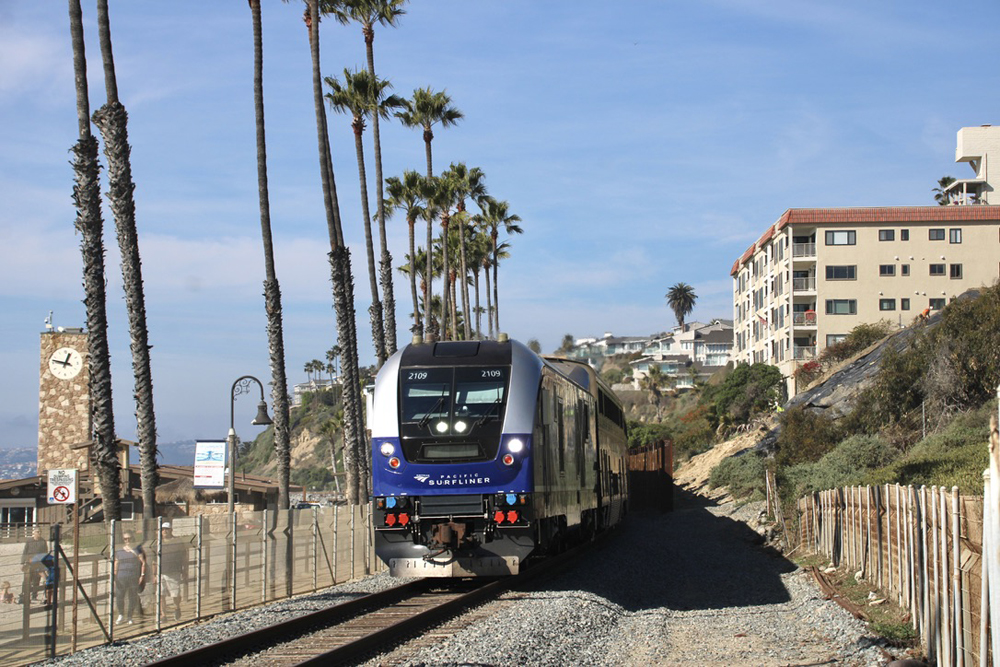
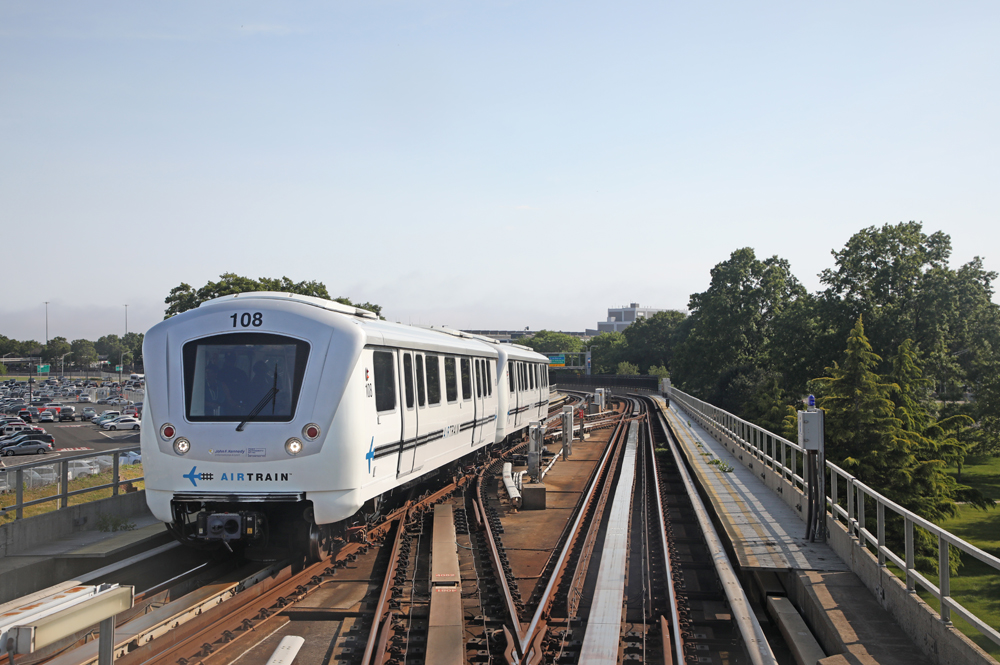




I wonder how long it will take Amtrak to adopt and use these new technologies when they can’t even get simple new Acela trainsets operational. No diesels in New York? Then I guess my memories of Genesis locos sitting in Penn Station running at notch 8 to power their cars are a fantasy?